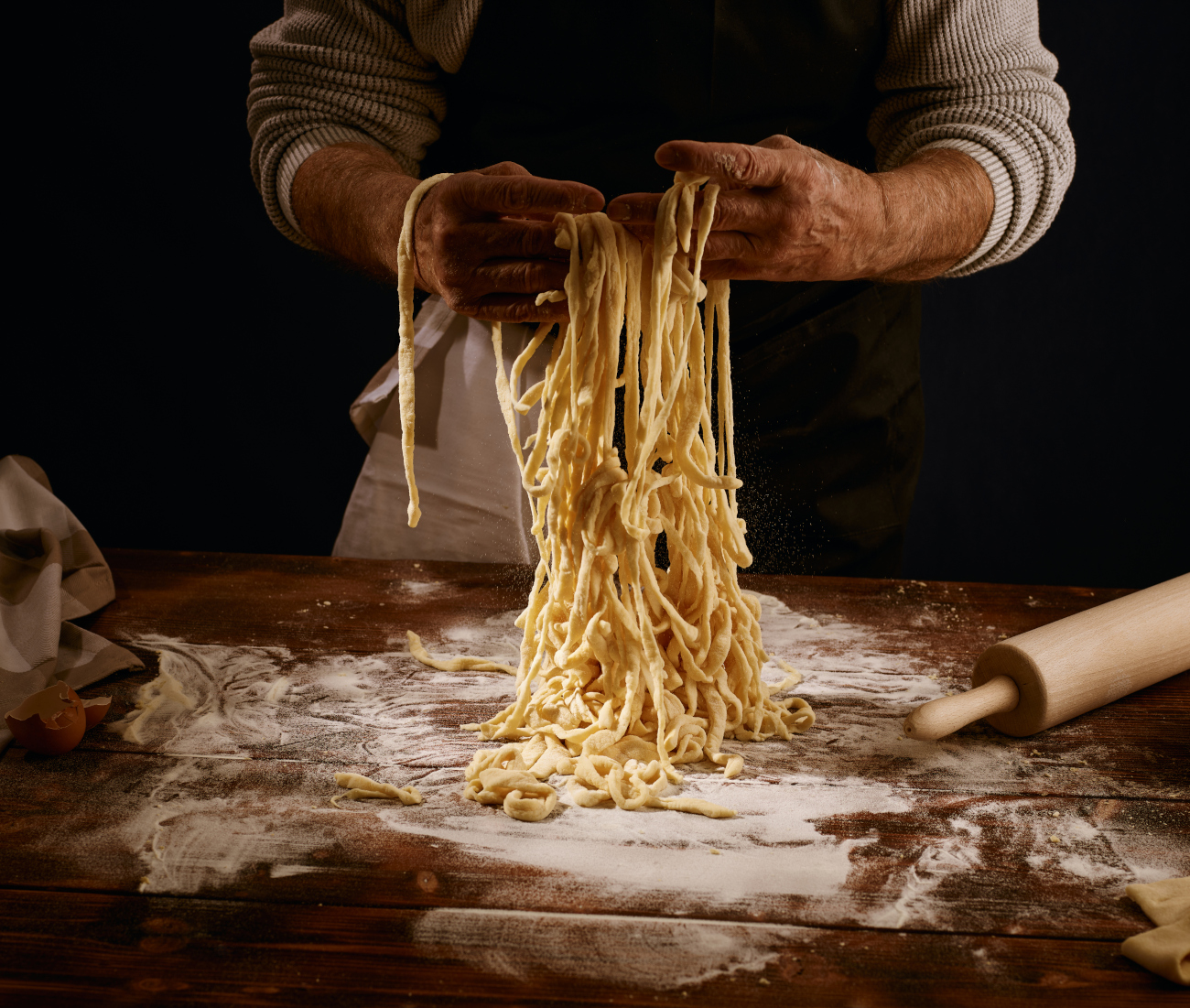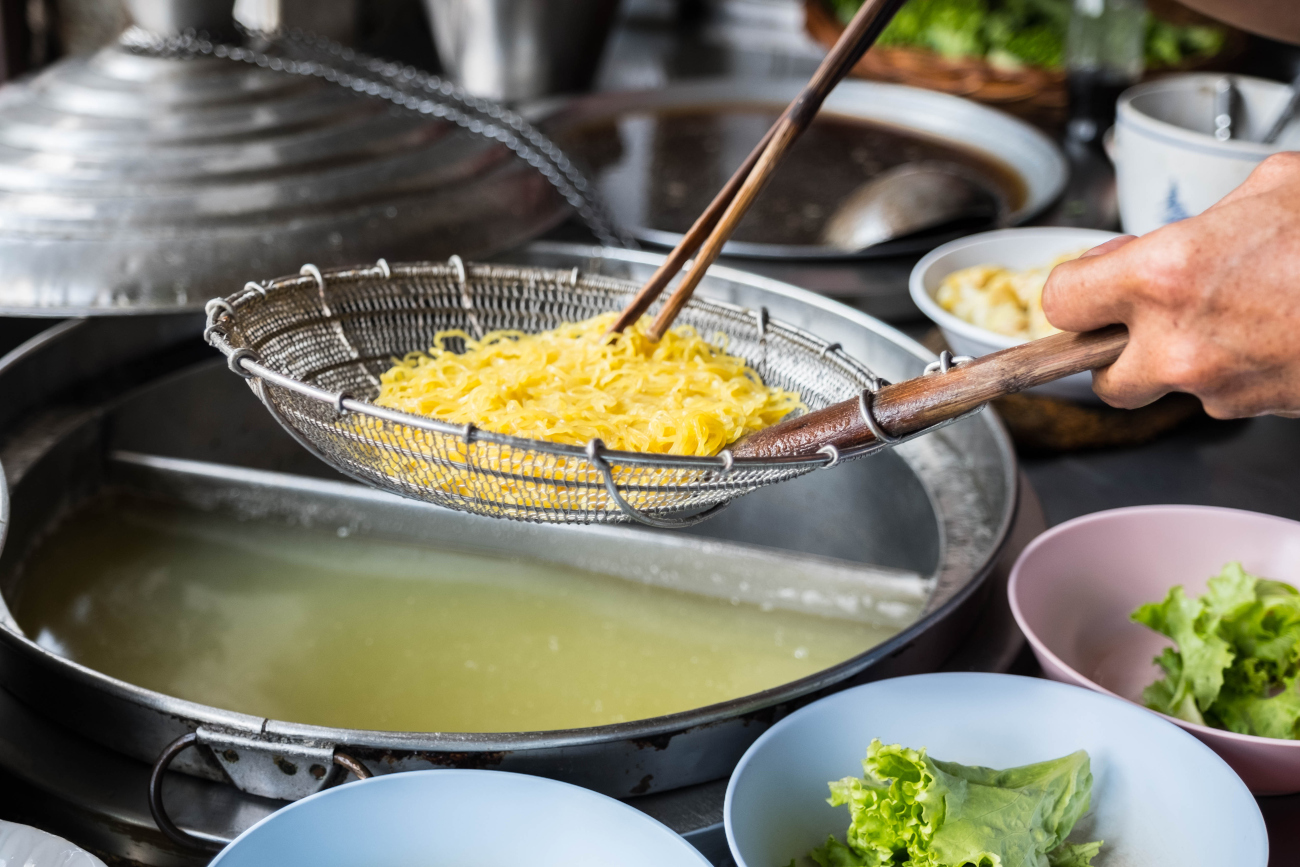Noodles are a mastery in technique. When you see a noodle maker from China stretch and spin a lumpy wad of dough into dozens of perfectly sized silky smooth strands of noodles, it’s quite the soul-satisfying art to witness. Once the noodles are made, the chef isn’t done, as there are as many regional Chinese sauces to coat noodles as there are pasta sauces in Italy. Seeing the intensity of the technique, one would assume that the Marco Polo story is true, that noodles were brought over to Italy via explorations on the Silk Road hundreds of years ago. But what if that wasn’t the case? What if noodles (and pasta too) weren’t invented in China?

The field of archeology, along with food historians and linguists, have been culinary detectives on the matter, tracing documentation and text to unearth just when people were referencing noodles. The Marco Polo story has pasta appearing in the 13th century, but evidence has shown that noodles hit the culinary scene in China and Italy much earlier.

Historians have found documented evidence of noodles as early as the 10th century. Yet this is early reference is the only surviving documented evidence, which doesn’t indicate its origin date, only that, by the time this recipe was written down, it was a desired enough dish to be recorded. In an Arabian cookbook, noodles are called lakhshah. The term lakhshah means to slide and it seems to be the origin word for other noodles in Eastern Europe. Russian’s word is lapsha, Hungary’s is laksa, the Ukarian word is lukshina, Afghanistan’s version is called lakhcak, and the Yiddish word is lokshn.

While we may think noodles were initially a savory delight, the earliest references to mill-processed noodles come in a sweet dessert called faloodeh. Dating back to the 4th century BCE, this vermicelli rice noodle was combined with rose water, lime juice, and fruit syrup.
The trade routes through Northern Africa introduced Italy to this carb delight and was quickly added to the Italian culinary lexicon as early as the 9th century, from long strands of Napoli spaghetti to a variety of shapes throughout various Italian regions.

How it got to China isn’t as clear cut as Italy’s version, but as China expanded its territory into more areas containing the Silk Road, Arabian merchants probably transferred food knowledge about lakhshah to Chinese merchants. At the beginning of the Han Dynasty (around 206 BCE) there were few indications of China having milling machines let alone noodles. Once milling machinery was a regular and readily accessible piece of equipment in China, noodle-pulling techniques and a variety of recipes for noodle-based foods exponentially increased. People state that there are noodles in China from 4,000 years ago, but without milling technologies creating noodles out of millet would have been an impossible task. This 4,000-year-old version of noodles is a far cry from the noodles being made in Persia.

The proliferation of noodles continued further into Southeast Asia through Arabian merchants and Muslim-Indian merchants who traveled as far as Indonesia. And through China, the mighty noodle spread further east.
While noodles are not the main staple food in the Persian region as they’ve become in a multitude of countries across the world, it’s still a deeply ancient tradition that comforts the soul and fills stomachs throughout the globe.













